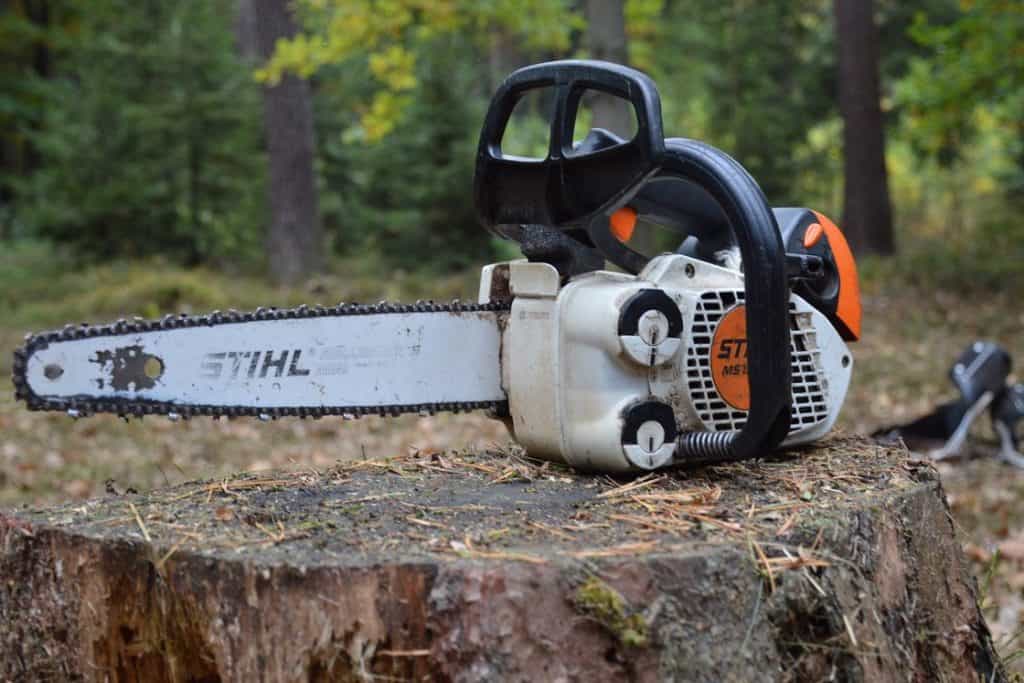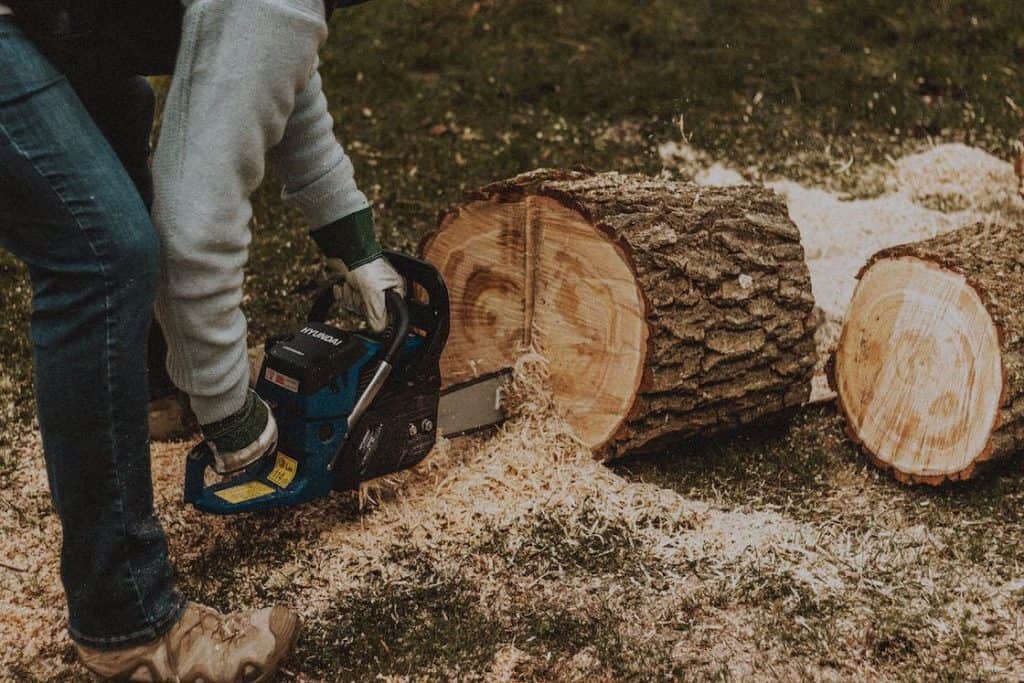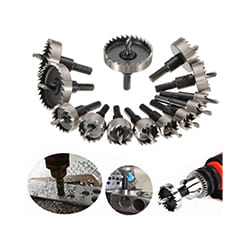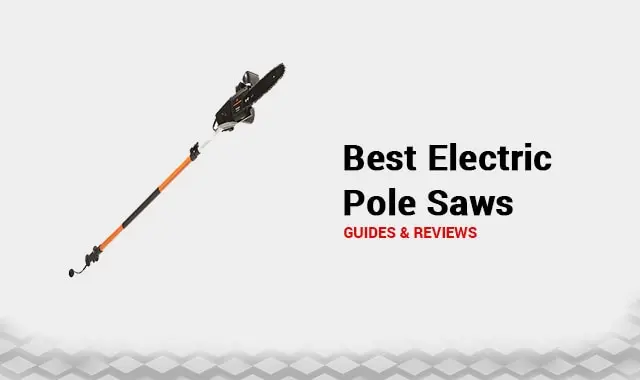Homeowners and professionals use chainsaws to cut wooden materials, prune trees, slice logs, and more. This power tool is powered by an internal combustion engine, which powers the chainsaw chain. One question chainsaw users often ask is whether chainsaw engine’s need back pressure.
Contents
Do Chainsaw Engines Need Back Pressure?
For two-stroke chainsaw engines, the less back pressure in the engine’s exhaust, the better it will run. Chainsaws typically use two-stroke engines, which are used to power most handheld lawn, garden, and power tools. While this type of engine also powers some larger machines, most larger machines use four-stroke engines, including tractors and lawnmowers.

While vehicles need engine exhaust back pressure to overcome hydraulic resistance from the exhaust system, chainsaw engines do not require back pressure to function properly. This misconception stems from an old-school myth about two-stroke vehicle engines needing back pressure to increase engine performance.
Adding back pressure to your chainsaw’s engine exhaust would have the opposite effect and impede its performance. Your battery-powered chainsaw’s two-stroke engine doesn’t require back pressure to operate normally. The intake stroke uses a mixture of air and fuel, while the compression stroke compresses the mixture to power the engine.
Exhaust ports are standard components on chainsaws, which are designed to allow exhaust gasses to escape the engine, invalidating the need for back pressure. Overall, there are no positive effects of adding back pressure to a chainsaw’s exhaust – but there are some other ways to increase your chainsaw engine’s performance!
What Adding Back Pressure Does to a Chainsaw
While many chainsaw users attempt to increase back pressure by restricting the exhaust port, there are many drawbacks to consider. Here are four ways increasing back pressure will negatively impact your chainsaw’s performance!
- Decreased Performance: Less energy will be available to drive your chainsaw engine’s pistons when back pressure increases, decreasing your saw’s overall power and effectiveness.
- Increased Engine Wear: Back pressure can strain your engine, which will increase the wear and tear on the internal components, including the pistons, exhaust valves, and cylinder walls.
- Lower Efficiency: Adding back pressure will lower your chainsaw’s efficiency and lead to increased fuel consumption, which will cause more emissions from your chainsaw.
- Reduced Exhaust Flow: Increasing back pressure by restricting the exhaust port will increase the resistance of the gasses leaving the exhaust, effectively restricting the flow of these gasses. Ultimately, this makes it hard for your engine to “breathe” properly, which significantly reduces your chainsaw’s performance.

How to Increase Your Chainsaw’s Performance Without Back Pressure
Here are six simple ways you can effectively increase your chainsaw engine’s performance without restricting the exhaust port to increase back pressure!
1. Correct Chain Tension
Always use the correct chain tension to ensure a chainsaw operates efficiently. A loose chain will cause the saw to vibrate excessively, making it harder to operate safely. Chains that are too tight will cause unnecessary strain on the engine and reduce the chain’s lifespan. Incorrect chain tension can cause a chainsaw to overheat, damaging internal parts and reducing its efficiency.
2. Filter Replacements
While it’s important to use the right oil-to-fuel ratio, your chainsaw’s air and fuel filters help ensure the correct mixture is used. When the filters become dirty or clogged, air and fuel flow to the engine will be restricted, reducing the chainsaw’s power. You also risk stalling the engine by neglecting filter maintenance and replacements.
3. Proper Usage
You should only use your chainsaw for its intended purpose, which is to cut through wooden materials. Attempting to cut abrasive materials like metal with your chainsaw will damage the chain, bar, and internal engine components. A chainsaw that’s been improperly used will not be as efficient as one that is used correctly – and will have a much shorter lifespan!
4. Resharpen Chain
Always resharpen your chainsaw chain to ensure your tool is working properly! When your chain dulls, extra strain is placed on the engine, reducing its cutting power and quality. On average, a chainsaw chain will remain sharp for three hours of cutting time and the chain must be replaced after being resharpened ten times. Always follow the manual’s sharpening and replacement directions.
5. Routine Maintenance
It’s important to properly maintain your chainsaw by cleaning it, lubricating it, and replacing any worn or damaged parts. Many users even flip the chainsaw’s guide bar to extend its lifespan and prevent uneven wear. Maintaining your chainsaw will ensure your chainsaw operates as efficiently as possible.

6. Suitable Fuel and Oil
Ensure you use high-quality oil and fuel for your chainsaw to keep it running smoothly. It’s also important to use the correct fuel-to-oil ratio, which will be outlined in your chainsaw’s manual. Always follow the manufacturer’s recommendations when refueling and lubricating your chainsaw.
Frequently Asked Questions
Is Back Pressure the Same as Exhaust Restriction?
While “back pressure” refers to the resistance of exhaust gasses exiting the chainsaw engine, “exhaust restriction” refers to physically blocking, restricting, or narrowing the chainsaw’s exhaust port in any way in order to increase back pressure in the exhaust. Doing this will negatively affect the engine’s performance.
Does Back Pressure Have Any Benefits for Chainsaws?
There are no benefits to restricting your chainsaw’s exhaust port to add back pressure. Doing this will cause the resistance of the exhaust gasses to reduce the engine’s power and efficiency. It’s better to use approved methods of improving your chainsaw’s performance.
How Can You Ensure Your Chainsaw Runs at Peak Performance?
Proper maintenance is crucial to keep your chainsaw operating at peak performance, including regular cleaning, air filter replacements, routine chain sharpening, correct chain tension, and using the right fuel and oil. Only using your chainsaw for its intended purpose will prolong the lifespan of your saw and ensure it operates efficiently.
Conclusion
Chainsaw engine exhausts do not require back pressure. While many chainsaw users have attempted to increase a chainsaw’s performance like this, increased back pressure will reduce its power and efficiency while increasing wear on critical internal engine components. There are better, easier, and safer ways to increase a chainsaw engine’s performance!


![Best Circular Saw Guide Rails – [Expert Reviews 2023 Edition] 6 Best Circular Saw Guide Rails – [Expert Reviews 2023 Edition] Best-Circular-Saw-Guide](https://brandisawyer.com/wp-content/uploads/2020/06/Best-Circular-Saw-Guide-768x384.jpg)
